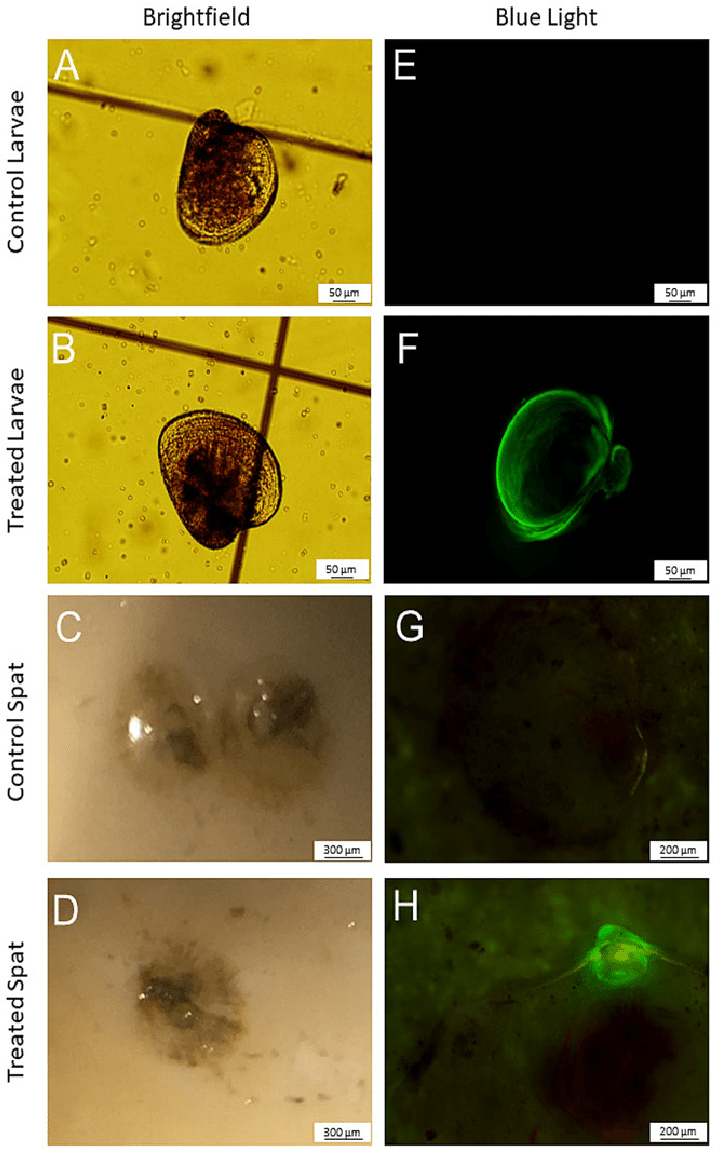Update (4/22/2024): This research was featured in the documentary A Passion for Oysters, airing on Wednesday, April 24 at 7:30pm ET during Chesapeake Bay Week.

New NCCOS research shows that releasing hatchery-grown oyster larvae directly over oyster reefs could be an effective way to maintain and possibly improve wild oyster stocks.
Ongoing efforts to restore eastern oyster (Crassostrea virginica) populations in regions of low natural recruitment rely on stocking of juveniles (spat on shell) to rebuild populations. Often, remote setting is used, which involves releasing hatchery-produced larvae into recirculating tanks filled with oyster shells — which have become increasingly scarce. There are multiple reasons for the shell shortage, including the toll that over-harvesting has taken through the years in South Atlantic states, as well as people throwing away the shells after serving oysters in seafood houses or at community oyster roasts. People are also using shells to pave driveways, enhance gardens. Shells can also be used for chicken feed or as ingredients in cosmetic products. The shortage is so pronounced that some states have spent millions of dollars through the years purchasing shells in an effort to restore and rebuild oyster reefs.
Other restoration methods that rely on releasing C. virginica larvae directly onto the shell in situ, called “direct setting,” are much more economical and have shown promise, but researchers were previously unable to definitively prove larval origin without the use of enclosures. The objective of this study was to determine if tagging C. virginica with calcein, a green fluorochrome dye that “glows” under blue light, could be a viable method for confirming larval origin in studies of direct setting in Chesapeake Bay.
To do so, C. virginica larvae were marked with calcein and released by divers directly onto three research sites constructed of oyster shell bags during July 2019 and September 2019. The bags were recovered after seven days. All recovered juveniles that were viewed under blue light contained the calcein tag, indicating that these spat were derived from larvae released over the reefs, and confirming their direct settlement. Initial settlement efficiencies on the sites ranged from 0.1 to 3.4% in July and September, respectively. The presence of the calcein mark in recovered spat confirmed larval origin. Together with the observed setting efficiencies similar to those of remote setting, these findings suggest there is promise for developing remote larval setting as a stock enhancement technique. However, more work is needed to understand the limitations of the technique, including its efficaciousness at a larger scale.
